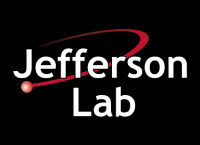Hampton University Graduate Studies Program (HUGS) in association with EIC2 will organize its 2018 program around the physics of the Electron-Ion Collider.
HUGS 2018
Jefferson Lab, Newport News, Virginia
May 29 - June 15, 2018
With support from the United States Department of Energy (DOE) and Jefferson Science Associates (JSA), lectures at the 33rd Annual Hampton University Graduate Studies (HUGS) Program at Jefferson Lab are scheduled to run from Tuesday, May 29 to Friday, June 15, 2018. Students will arrive on Monday, May 28 and depart on Saturday, June 16.
The HUGS Program at Jefferson Lab is a summer school designed for experimental and theoretical nuclear and particle physics graduate students who have finished their coursework and have at least one year of research experience in these fields. Students who are well into a research project are also encouraged to apply. The program is simultaneously intensive, friendly, and casual. All lecturers are internationally renowned and leaders in their fields. The students will be housed on site at Jefferson Lab, and there will be many opportunities to interact with Jefferson Lab staff, as well as the lecturers, other graduate students and visitors. Acceptance into the program is competitive, and a limited number of scholarships is available. Deadline for scholarship application is March 16, 2018.
Speakers and Topics:
The 2018 school will focus on experimental and theoretical topics of high current interest in strong interaction physics. In particular, students will receive excellent insight into the physics to be studied at Jefferson Lab and at the Electron-Ion Collider in the upcoming years, as well as related topics of interest in nuclear and particle physics. Speakers and topics for this year include:
- Instructors and topics to come -- for now, please look at the HUGS archives
In addition to the main lectures, the school will offer topical seminars by Jefferson Lab researchers, and an opportunity for the students to present their research in a short seminar.
Student Support:::
Thanks to a grant from the United States Department of Energy, we will be able to offer a limited number of standard HUGS fellowships that will cover lodging at the SURA residence facility, where kitchen facilities are available, and a contribution towards meal expenses. Students interested in this opportunity should note so in the registration page, and address their financial need in the appropriate field.
In addition to these, a JSA/HUGS fellowship for Graduate Students from Developing Countries supported by the JSA Initiatives Fund Program was separately announced and circulated, and applications are now closed. Under this fellowship, that supplements the standard one, we will be able to support one or two graduate students from a developing country, fully covering travel expenses (including international airfare), room, board and from 1 to 3 additional week at Jefferson Lab to meet with laboratory researchers and users, and to initiate or strengthen a research collaboration.
Physics Careers Workshop:
As part of the HUGS school, but open to all interested graduate students and post-docs from the Jefferson Lab community, we will also organize a mini-workshop on Physics Careers.
The organization of this mini-workshop is in progress, and more detail will be made available later. Information on previous editions can be found in the HUGS archives
Application:
To apply to HUGS 2018, please follow the link on the sidebar, and arrange for one letter of recommendation (ideally from your Ph.D. advisor) to be separately sent to the address below. Submission received before the deadline will automatically place the student in the standard fellowship competition.
The deadline for application submission is March 16, 2018. Applications will still be accepted after this date but will not be included in the fellowship competition. Students will be notified by March 28, 2018 of acceptance.
Please forward all queries to
HUGS 2018
Jefferson Lab
Attn: Mary Fox, Suite 1, MS-12H2
12000 Jefferson Avenue. Newport News, VA 23606
Phone: (757) 269-6263 Fax: (757) 269-7002
e-mail: hugs@jlab.org
https://www.jlab.org/intralab/calendar/hugs/index.html


